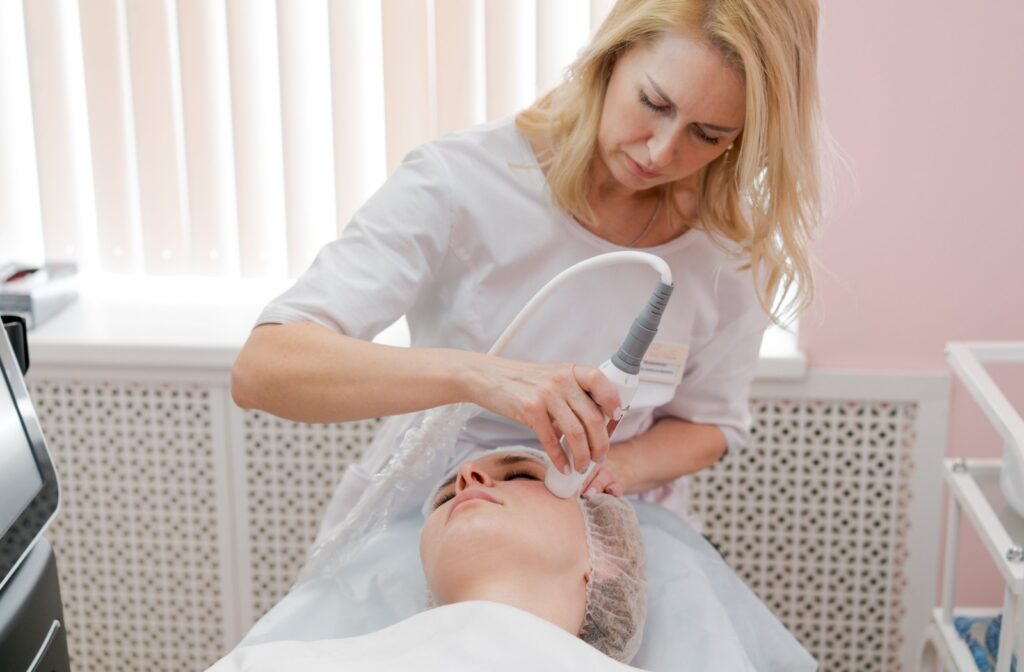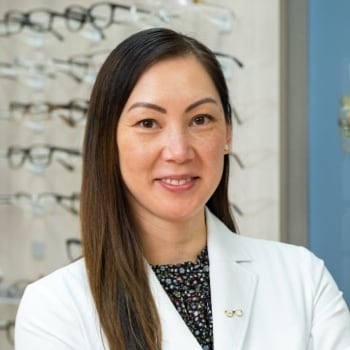Dry eyes is a more common experience than you may think. And dealing with those dry, gritty, and burning sensations is rarely a pleasant experience. If you’re dealing with dry eyes, it’s time to visit your optometrist to discuss radiofrequency for dry eyes.
This treatment is non-invasive, using a small handheld applicator to gently heat the areas around the eyes. By stimulating the area, radiofrequency promotes a healthier tear film, restoring the balance to your eyes and helping you find quick relief!
What Is Dry Eye?
Your eyes are protected by an extremely thin film of tears. These tears are responsible for keeping the eye protected from the outside world—they flush away contaminants, dust, dirt, and bacteria. While doing so, they offer a clear, smooth surface so you can still see effectively.
To function well, this tear film needs a careful balance of water, mucus, and oil. However, they don’t always get the components they need. When there’s an imbalance in the tear film—either in the quantity or quality of the tears being produced—your tears no longer protect your eyes. Instead, your eyes are vulnerable to the outside air.
When this occurs, it’s a condition called dry eye. Usually, this develops due to a problem with the gland that produces the oil layer of the tears—the layer that prevents early tear evaporation. However, this condition can also develop due to:
- A windy, smoky, or dry environment
- Hormonal changes
- Underlying medical conditions
- Nutritional deficiencies
Dry eye isn’t just an inconvenience. If it’s left untreated, it can lead to long-term serious eye issues. That’s why it’s so crucial to recognize the signs that you’re dealing with dry eye; this way, you can learn when it’s time to see a professional.
How to Tell if You Have Dry Eye
If you’re wondering whether you have dry eye, here are some symptoms to watch for:
- Persistent dryness, scratchiness, and a burning sensation in your eyes
- A feeling that something is in your eye
- Redness and irritation, especially in windy or dry conditions
- Sensitivity to light
- Blurred vision
- Difficulty wearing contact lenses
If you recognize any of these symptoms, it’s essential to take them seriously. Dry eye can quickly have a significant impact on your overall quality of life. So if you recognize these symptoms, what can you do?
How to Treat Dry Eye
With dry eye, a proactive approach is key. Don’t wait for your discomfort to worsen; instead, take quick steps to intervene. It all starts with a quick visit to the optometrist.
During your appointment, your optometrist will evaluate the health of your eyes and determine the best course of action for treatment. Usually, your optometrist will recommend a mix of the following:
- Dietary changes to get your eyes the nutrients needed
- Using eye drops when needed to find temporary relief
- Punctal plugs to prevent tear drainage
- Environmental changes to reduce how hard your eyes need to work
However, sometimes you’ll need a more advanced approach. If this is the case, they may recommend an in-office approach like radiofrequency.
What Is Radiofrequency?
Inside your eyelids, you have dozens of tiny glands called meibomian glands. They’re responsible for producing the oils for your tear film to prevent early evaporation.
Sometimes, these glands can become blocked up or clogged with old, hardened oils. The oils can no longer reach the tears, and your tear film starts evaporating quickly, leading to the tell-tale symptoms of dry eye.
Radiofrequency (RF) treatment is an advanced and non-invasive option for addressing this situation. This innovative therapy uses controlled RF energy to gently heat and stimulate the eyes and surrounding area. Soon, the oil blockages and clogs break down, liquifying and eventually reaching the tear film.
This quickly restores the normal function of the meibomian glands and promotes a healthy, balanced tear film. You’ll notice almost immediate results, and soon, your dry eye symptoms should disappear.

The Benefits of Radiofrequency
Radiofrequency treatment is an excellent way to treat dry eyes. This treatment offers several benefits; it is:
- Non-invasive
- Quick
- Effective
- Long-lasting
The results typically appear quickly, and there’s almost no downtime. Each session takes around 15-20 minutes, making it an extremely efficient approach to finding relief from your dry eyes!
Try Dry Eye Therapy for Yourself
Dealing with dry eyes isn’t a pleasant experience. Fortunately, there’s no need to suffer in silence! If you’re dealing with the discomfort and irritation caused by dry eyes—or any other unusual symptoms—come talk to our team at Eyes on Plainville. We’re here to help you maintain clear, comfortable vision, so book an appointment with us today!





